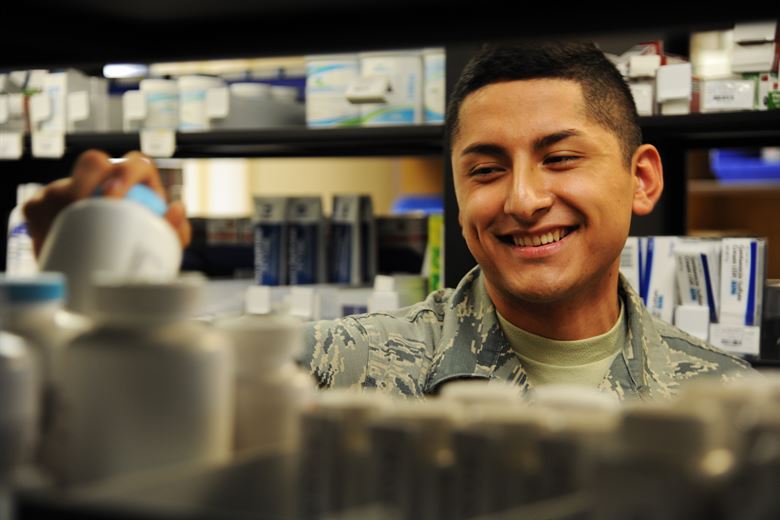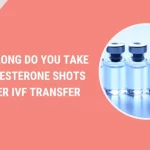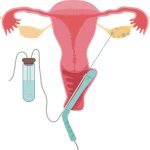Will TRICARE Cover IVF? Your Guide to Fertility Benefits for Military Families
Starting a family is a dream for many, but for military families, the journey can come with unique challenges. If you’re covered by TRICARE, the health insurance program for service members, retirees, and their families, you might be wondering: Will TRICARE cover in vitro fertilization (IVF)? It’s a big question, and the answer isn’t as simple as a yes or no. With infertility affecting so many in the military community—sometimes at higher rates than civilians—understanding your options is key to making informed decisions.
In this guide, we’ll dive deep into what TRICARE offers for IVF and fertility care, break down the rules, share real-world tips, and explore paths forward if coverage falls short. Whether you’re an active-duty service member, a spouse, or a retiree, this article is here to help you navigate the maze of military healthcare and family-building.

What TRICARE Says About IVF Coverage
TRICARE is a lifeline for millions in the military community, covering everything from routine checkups to complex surgeries. But when it comes to fertility treatments like IVF, the rules get specific—and a little tricky.
Right now, TRICARE doesn’t cover IVF as a standard benefit for most beneficiaries. That might feel like a punch to the gut if you’re hoping to start or grow your family. However, there are exceptions, and they hinge on one major factor: whether your infertility is tied to a serious injury or illness from active duty. Here’s the breakdown:
- Who Qualifies for IVF Coverage?
TRICARE will pay for IVF if you’re an active-duty service member (or in some cases, a dependent) and your infertility stems from a “serious or severe” condition caused by your service. Think injuries like those from combat, toxic exposure, or neurological damage that affect your ability to conceive naturally. The Department of Defense (DoD) calls these “Category II or III” conditions—meaning they’re significant enough that you might medically separate from service. - What’s Covered When You Qualify?
If you meet the criteria, TRICARE steps up in a big way. You can get up to six egg retrieval attempts and three completed IVF cycles at military hospitals or through network providers. That’s a huge deal, considering a single IVF cycle can cost $12,000 to $25,000 out of pocket in the civilian world. Plus, they’ll cover medications and even allow the use of donor eggs, sperm, or embryos (though you’ll pay for those extras yourself). - The Catch:
If your infertility isn’t service-related—say it’s due to age, unexplained causes, or lifestyle factors—TRICARE won’t cover IVF. That leaves a lot of military families out in the cold, especially since service members often delay starting families due to deployments or frequent moves.
So, if you’re wondering whether TRICARE will foot the bill for IVF, the first question to ask is: Is my situation tied to a service-connected issue? If not, don’t lose hope just yet—there are other paths we’ll explore later.
Why Military Families Face Unique Fertility Challenges
Infertility isn’t just a medical issue—it’s a personal one that can hit military families harder than most. Studies show that service members and their spouses deal with infertility at rates higher than the general population. A 2021 Blue Star Families survey found that 42% of active-duty families reported challenges having children, compared to about 1 in 8 civilian couples.
Why the gap? Military life throws some curveballs:
- Deployments and Separations:
Timing is everything in conception, and long separations can make it tough to try naturally. Imagine being stationed overseas while your spouse is back home—those months apart add up. - Stress and Health Risks:
The military isn’t exactly a low-stress gig. Combat exposure, physical strain, and even toxic chemicals (like burn pits) can mess with reproductive health. Research from the National Institutes of Health (NIH) suggests that veterans exposed to certain toxins have higher rates of infertility. - Frequent Moves:
Permanent Change of Station (PCS) orders can disrupt fertility treatments. You might start seeing a specialist, only to get relocated halfway across the country—or the world.
For example, take Julie, an Army spouse I heard about through a military support group. She and her husband tried for years to conceive, but between his deployments and their moves from Texas to Germany, they missed the window for natural conception. By the time they sought IVF, they learned TRICARE wouldn’t cover it because his infertility wasn’t service-related. Stories like theirs aren’t rare, and they highlight why this topic matters so much.

Where You Can Get IVF Through TRICARE
If you do qualify for IVF coverage, the next step is figuring out where to go. TRICARE prioritizes military treatment facilities (MTFs) for fertility care, and eight hospitals across the U.S. offer assisted reproductive technology (ART) services, including IVF. These spots are part of training programs for reproductive endocrinology, which means you’re getting top-notch care at a fraction of the civilian cost—sometimes as low as $5,000 per cycle.
Here’s the list of MTFs offering IVF:
| Location | Details |
|---|---|
| Walter Reed (Bethesda, MD) | One of the biggest programs, priority for qualifying members |
| Tripler Army Medical Center (HI) | Serves Pacific-based families |
| Madigan Army Medical Center (WA) | Known for shorter wait times in some cases |
| Womack Army Medical Center (NC) | Focuses on active-duty priority |
| Naval Medical Center (San Diego, CA) | Great for West Coast families |
| Brooke Army Medical Center (TX) | Large facility with ART expertise |
| Wright-Patterson AFB (OH) | Serves Midwest military communities |
| Eglin AFB (FL) | Smaller program, but still effective |
Pro Tip: Call ahead to check availability. These programs operate on a first-come, first-served basis, and waitlists can stretch months—or even a year—depending on demand. If an MTF isn’t an option, TRICARE can cover care at civilian network providers, but you’ll need pre-authorization from your regional contractor (like Humana Military or Health Net).
What’s Not Covered (and Why It Matters)
Let’s be real: TRICARE’s IVF rules leave a lot of gaps. Here’s what’s not covered, and why it’s a big deal for military families:
- Non-Service-Related Infertility:
If your infertility isn’t linked to active-duty service, you’re out of luck. This excludes tons of couples dealing with common issues like endometriosis or low sperm count. - Surrogacy Costs:
Even if you qualify for IVF, TRICARE won’t pay a surrogate to carry the pregnancy. You can use a TRICARE-enrolled surrogate, but she can’t be compensated beyond travel expenses (with a waiver). - Egg or Sperm Donation Fees:
While you can use donor materials, the cost falls on you. That’s hundreds or thousands of dollars per cycle, on top of other expenses. - Cryopreservation After Separation:
TRICARE covers freezing eggs or sperm while you’re active duty, but once you leave the military, you’re responsible for storage fees.
This setup frustrates a lot of families. Posts on X from early 2025 show military spouses venting about how civilian employers often cover IVF, while TRICARE lags behind. One user wrote, “My husband served 15 years, and we still can’t get help building our family—meanwhile, my friend’s corporate job paid for her IVF.” It’s a sentiment that’s trending, and it’s pushing advocacy groups to fight for change.
Interactive Quiz: Do You Qualify for TRICARE IVF Coverage?
Not sure where you stand? Take this quick quiz to get a sense of your eligibility. Answer yes or no, and tally your points (1 for each “yes”).
- Are you an active-duty service member?
- Do you have a serious injury or illness from active duty (like combat or toxic exposure)?
- Has a doctor confirmed this condition causes your infertility?
- Are you enrolled in TRICARE and able to access an MTF or network provider?
Results:
- 3-4 Points: You likely qualify—talk to your doctor and TRICARE contractor ASAP.
- 1-2 Points: You might not meet the full criteria, but check with a specialist for options.
- 0 Points: Standard IVF coverage probably isn’t available, but keep reading for alternatives!
This isn’t official advice (always confirm with TRICARE), but it’s a starting point to cut through the confusion.
New Policy Changes in 2024: A Game-Changer for Some
Here’s some good news: The DoD shook things up in 2024 with a policy update that expands who can get IVF. After a lawsuit in New York pushed back on old rules, TRICARE now covers:
- Single Troops and Unmarried Couples: Before, you had to be legally married to qualify. Now, relationship status doesn’t matter—as long as the infertility is service-connected.
- Donor Materials Without Restrictions: You can use donor eggs or sperm even if you can’t produce your own, a big shift from the “use your own cells” rule.
This change came after advocacy from groups like the National Organization for Women, who argued that military families deserve the same fertility benefits as federal employees (many of whom get IVF through the FEHB program). It’s a step forward, but it still doesn’t help those whose infertility isn’t tied to service.
What’s next? The 2025 National Defense Authorization Act (NDAA) almost expanded IVF coverage to all TRICARE beneficiaries, regardless of service connection. Both the House and Senate versions had provisions, but they got cut from the final bill in December 2024 due to political pushback. Advocates aren’t giving up—expect more debate in 2026.
Alternatives If TRICARE Won’t Cover IVF
If TRICARE says no to IVF, you’re not out of options. Military families are resourceful, and there are ways to make fertility care work. Here’s what you can do:
1. Military Hospital Discounts
Even if you don’t qualify for full coverage, MTFs offer IVF at steep discounts—sometimes 50-75% less than civilian clinics. For example, a cycle at Walter Reed might cost $5,000, while a private clinic charges $20,000. Get on the waitlist early, and be flexible with timing.
2. Private Insurance Through a Spouse
If your spouse works outside the military, check their employer’s health plan. About 47% of large companies covered IVF in 2021, per the International Foundation of Employee Benefit Plans, and that number’s growing. Some plans even offer $25,000 annual IVF benefits—way more than TRICARE’s baseline.
3. Grants and Financial Aid
Nonprofits step in where insurance falls short. Check these out:
- Bob Woodruff Foundation (VIVA Program): Grants for veterans with service-related infertility.
- Cade Foundation: Up to $10,000 for IVF or adoption, with military families prioritized.
- Baby Quest Foundation: $2,000-$16,000 grants, often favoring military applicants.
4. Fertility Clinics With Military Discounts
Some civilian clinics, like California IVF Fertility Center, offer reduced rates for TRICARE families. Pair that with covered diagnostic testing (like hormone checks or semen analysis), and you can save thousands upfront.
5. Crowdfunding or Savings Plans
It’s not glamorous, but many families turn to GoFundMe or personal savings. Break it down: If IVF costs $15,000, saving $1,250 a month gets you there in a year. Small sacrifices—like skipping takeout—add up.
Real Story: I came across a Navy couple who combined a military discount at an MTF with a Cade Foundation grant. They cut their IVF cost from $18,000 to $7,000 and welcomed twins in 2024. It’s proof that mixing resources can work.
How to Maximize Your TRICARE Benefits
Even if IVF isn’t covered, TRICARE can still help with fertility. Here’s how to squeeze every drop out of your benefits:
- Get Diagnostic Testing Covered:
TRICARE pays for tests like bloodwork, ultrasounds, and semen analysis if they’re “medically necessary.” Use these to pinpoint your infertility cause without spending a dime. - Request Pre-Authorization:
For any treatment (even non-IVF options like hormone therapy), call your contractor (e.g., 1-800-444-5445 for Humana Military) to confirm coverage and avoid surprise bills. - Explore Non-IVF Treatments:
TRICARE covers things like surgery to fix blocked tubes or medication for ovulation issues. These might solve your problem without needing IVF. - Document Everything:
If you suspect a service-related cause (like chemical exposure), keep records of your duty stations and health issues. It could make a case for coverage later.
Action Step: Schedule a consult with your primary care manager (PCM) at an MTF. Ask for a referral to a reproductive specialist—it’s free and starts the process.
The Emotional Side: Coping When Coverage Falls Short
Let’s talk about the part no one likes to admit: Infertility is tough, and military life can make it tougher. When TRICARE says no, it’s not just a financial hit—it’s a blow to your hopes. Here’s how to keep going:
- Join a Support Group:
Online communities like Military Family Building Coalition (MFBC) or Resolve offer a space to vent and connect. You’re not alone in this. - Talk to a Counselor:
TRICARE covers mental health visits. A therapist can help you process the stress and grief that come with infertility. - Focus on What You Can Control:
Maybe IVF isn’t an option now, but small steps—like improving diet or tracking ovulation—keep you moving forward.
One spouse I met at a base event shared how she and her husband turned their frustration into action. After TRICARE denied their IVF claim, they started a blog to raise awareness and fundraise. It didn’t erase the pain, but it gave them purpose.
Poll: What’s Your Biggest Fertility Hurdle?
We want to hear from you! Vote below and see how your experience stacks up:
- A) Cost of treatments
- B) TRICARE coverage limits
- C) Timing around military life (deployments, PCS)
- D) Finding the right doctor or clinic
Drop your vote in the comments or imagine clicking a button—either way, it’s a chance to reflect on what’s hitting you hardest.
Three Under-the-Radar Facts About TRICARE and IVF
Most articles skim the surface, but here are three points you won’t find everywhere:
1. Retirees Are Left Out—Even With Service Injuries
If you’re a retiree, TRICARE’s IVF coverage doesn’t extend to you, even if your infertility traces back to active duty. It’s a loophole that’s sparked outrage, and advocacy groups like MOAA are pushing to fix it. For now, retirees lean on VA benefits (if eligible) or private funds.
2. Cryopreservation Is a Hidden Gem
Active-duty members can freeze eggs or sperm for free if facing a deployment or medical issue that risks fertility. The DoD splits storage costs while you’re in, but few know about this perk. Ask your PCM—it’s a game-changer for planning ahead.
3. TRICARE’s Benchmark Lags Behind FEHB
The Federal Employee Health Benefits (FEHB) program offers IVF to federal workers through 25 plans in 2025, some with $25,000 annual benefits. TRICARE uses FEHB as a standard but hasn’t caught up. This gap fuels calls for reform, especially since military families sacrifice just as much.
These nuggets show where TRICARE shines—and where it stumbles. They’re also ammo for your next chat with a lawmaker or advocate.
The Future of IVF Coverage: What’s on the Horizon?
Change is brewing. Advocacy is heating up, and military families are making noise. Here’s what’s in play:
- Legislative Push:
The IVF for Military Families Act, introduced by Sen. Tammy Duckworth and Rep. Sara Jacobs in 2025, aims to expand TRICARE coverage to all beneficiaries, not just those with service injuries. It didn’t make the 2025 NDAA, but it’s got bipartisan buzz for 2026. - Public Support:
A 2024 poll from Resolve found 80% of voters favor IVF coverage for service members. That’s pressure Congress can’t ignore forever. - DoD Studies:
The Senate’s 2024 NDAA draft asked for a feasibility study on broader IVF access. While it got axed, the idea’s still floating around the Pentagon.
My take? It’s only a matter of time. Military readiness depends on happy, healthy families, and fertility care is part of that equation. Until then, stay vocal—write your reps, join advocacy groups, and keep the conversation alive.
Your Next Steps: A Roadmap to Fertility Care
Ready to take charge? Here’s a step-by-step plan to get started, whether TRICARE covers you or not:
- Check Your Eligibility:
Call your TRICARE contractor (East: 1-800-444-5445; West: 1-844-866-9378) and ask about IVF criteria. Have your service history handy. - See a Specialist:
Get a referral to a reproductive endocrinologist through your PCM. They’ll run tests to confirm infertility and explore causes. - Explore MTF Options:
Contact one of the eight ART hospitals to ask about wait times and costs. Book a spot if you qualify. - Research Funding:
Apply for grants or check your spouse’s insurance. Stack discounts and aid to lower the bill. - Build a Support Plan:
Line up a counselor, join a group, and lean on your community. This journey’s easier with backup.
Quick Tip: Timing matters. Start now—fertility treatments take months, and military life doesn’t wait.

Final Thoughts: You’ve Got This
Navigating TRICARE and IVF can feel like decoding a secret mission, but you’re tougher than the toughest drill sergeant. Whether you qualify for coverage, tap into discounts, or blaze your own trail, the goal is the same: building the family you’ve dreamed of. Military life throws obstacles, but it also builds resilience—and that’s your superpower here.
Got questions or a story to share? Drop it below—I’d love to hear how you’re tackling this. For now, take it one step at a time, and know you’re not alone on this road.





